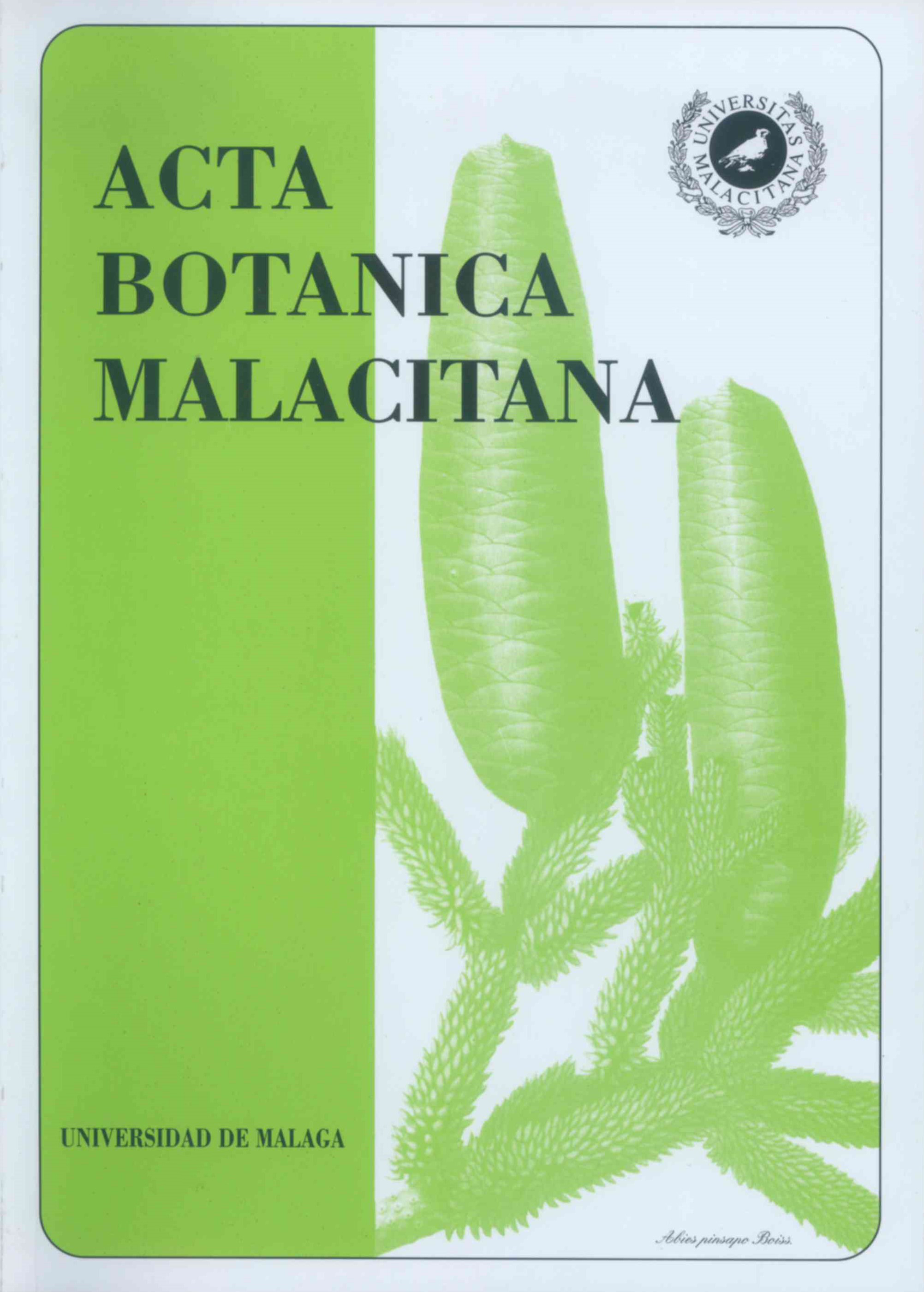Si?ntesis de la mycobiota (micoflora) andaluza: aspectos flori?sticos, corolo?gicos y ecolo?gicos.
DOI:
https://doi.org/10.24310/abm.v28i0.7262Abstract
RESUMEN. Síntesis de la mycobiota (micoflora) andaluza: aspectos florísticos, corológicos y ecológicos. Se presenta un catálogo de la Micoflora de Andalucía, en la que se incluyen 1876 taxones de macromicetos: Pyrenomycetes, Leotiales, Peziza les, Aphyllophorales, Agaricales, Boleta les, Russulales y Gasteromycetes. Se analizan aspectos relativos a su distribución provincial, porcentaje de especies micorrizógenas, patógenas y saprótrofas y su localización geográfica. Se analiza el grado de similaridad (índice de Jaccard) entre las floras micológicas de Andalucía occidental y oriental.
Palabras clave. Catálogo micológico, Andalucía, distribución geográfica, especies micorrizógenas, saprótrofas y patógenas, Indice de Jaccard, España.
ABSTRACT. The mycohiota synthesis from Andalusia: floristic, chorological and ecological data. A catalogue with 1876 taxa of macrofungi (Pyrenomycetes, Leotiales, Pezizales, Aphyllophorales, Agaricales, Boletales, Russulales and Gasteromycetes) from Andalusia (Spain) is provided. The geographical distribution is analyzed. The percentage of mycorrhizal, saprotrophs and parasites species is discused. The Jaccard Index is applied to determinate the similarity between the mycobiota from western-Andalusia and eastern- Andalusia.
Key words. Mycological check-list, Andalusia (Spain), chorology, mycorrhizal, saprotrophic and pathogenical species of macrofungi, the Jaccard index, Spain.
Downloads
Metrics
Downloads
Published
How to Cite
Issue
Section
License
All information related to the licensing of published works in Acta Botanica Malacitana and copyright can be found in our Editorial Policy.







1.png)
